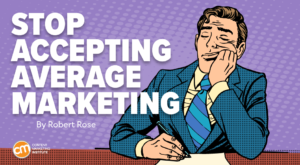
Agile marketing is having a moment. According to AgileSherpas’ 2022 State of Agile Marketing Report, over 40% of the 513 marketers surveyed said they use some form of agile in their work. Among the 42% respondents who still use traditional marketing approaches, 91% said they plan to implement an agile framework within a year.
Agile marketing emphasizes speed and flexibility, collaboration, communication, and data — the qualities needed to navigate today’s constantly shifting marketing ecosystem. It allows marketers to adapt their campaigns and test new strategies in near real-time. It’s popular because the approach is helping companies become more efficient at managing the entire marketing process — from swiftly changing priorities, to increasing brand visibility, to improving marketing’s productivity.
In this post we’ll cover:
- What is agile marketing?
- Core values of an agile marketing framework
- Why should marketers care?
- Who uses agile marketing tools?
- What types of tools or software enable agile marketing?
- How agile marketing can help marketers succeed
- The future of agile marketing
- Additional reading
What is agile marketing?
Agile marketing is a framework that uses self-organizing, cross-functional teams that work in frequent small bursts (called “sprints”). This allows marketing teams to adapt campaigns and strategies quickly, based on continuous feedback and data.
Agile marketing borrows some of the principles of agile software development methodologies and tools like Kanban, a system of visual project planning (think sticky notes on white boards) and Scrum, a sprint-based approach to team collaboration. But marketing is not software development, which is why agile experts like Stacey Ackerman, MarTech contributor and agile coach, are developing frameworks like the Agile Marketing Navigator, specifically for marketing teams.
Gartner’s official definition of agile marketing, which they refer to as “agile marketing project management” is:
“A method that applies tools, processes and organizational design concepts, inspired by software development methodology, to make marketing programs more relevant, more adaptive and efficient.”
Core values of an agile marketing framework
According to the Agile Marketing Manifesto which outlines the values and principles of agile marketing, an agile marketing approach incorporates the following core values:
- Outcome over output. Agile marketing prioritizes customer and business needs first versus simply engaging with marketing for marketing’s sake. It requires input from all team members who must agree on a desired outcome before any work begins. Initiatives and tasks are done with purpose. Team members work together and collaborate to finish all aspects of a project.
- It dispenses with perfection. Agile marketing uses an iterative approach that seeks to deliver value early and often versus attempting to achieve a flawless campaign right out of the gate. It leverages efficiency and viability, focusing on what’s executable now, what can be repurposed, and if a simple (versus complex) approach will suffice to get something launched quickly. The goal is to seize opportunities as they arise and refine as you go along.
- Data and experimentation. An agile approach is data-driven, with learning derived from constant experimentation and strategy driven by actual results versus opinions or adherence to outdated conventions.
- Cross-functional collaboration. Agile marketing depends on collaboration using self-functioning teams. It seeks to eliminate silos by with a cross-functional approach that unifies departments and fosters collaboration. Agile teams are aligned with their organization’s goals and objectives rather than a single department’s goals. It dispenses with hierarchies, though team leaders help drive projects and ensure workflows are maintained.
- Responsiveness. Agile’s iterative approach makes it inherently responsive to changing needs. Rather than being tied to a static strategy or plan, it allows for perpetual deviation based on changes in the market, customer needs, or campaign performance.
Why marketers should care about agile marketing
Agile marketing focuses on quantity over quality. It’s outcomes-driven, allowing marketers to measure success in early intervals and pivot quickly when something’s not working. By following agile methodologies, marketers can try lots of new things, repeat what works, and support their decisions with data-backed evidence.
Since agile teams are collaborative and self-guided versus siloed and hierarchical, marketers can develop and modify campaigns by coordinating with multiple teams and departments. This allows for people to work outside of their job title, taking responsibility for all aspects of the campaign rather than a specific piece of it. It also enables quick pivoting and responsiveness based on what’s happening with your customers and market in real time. All of this helps you remain competitive while increasing efficiency and productivity.
Agile marketing tools focus on collaboration, data management, task management and team communication. They’re used by multiple teams and employees to facilitate an agile marketing framework. Here are some of the teams and people most likely to use these tools:
- Stakeholders and practice leaders – to align marketing objectives with company goals, ensure team members have a vested interest in marketing output, and review progress.
- Marketing, sales, and team leaders – to foster collaboration and facilitate execution.
- Project/program managers – to create plans, prioritize work, track progress, and liaise with team leaders.
- Developers and tech managers – to maintain tools, develop digital assets, and optimize content/workflows.
- Content creators and marketers – to develop content assets, execute plans, and optimize campaigns.
- Analysts – to collect campaign data, create actionable insights, and inform campaign strategy based on data and results.
Which technologies support agile marketing?
Agile marketing uses a combination of technology solutions and tools to facilitate team collaboration, break down silos, track performance, and maintain project workflow. Here are some of the different tools you might encounter as an agile-enabled team:
- Marketing work management platforms. Platforms like Adobe Workfront and Airtable help distributed employees collaborate and communicate, track hours, provide visualization tools, and often have other features like data asset management (DAM) to help with seamless communication and workflow.
- Project management tools. Tools like Jira and Trello support agile frameworks with Kanban-style interfaces that help teams implement and manage agile workflows.
- Data gathering and analysis tools. Tools like Google Analytics and Adobe Audience Manager help teams collect data, create actionable insights, and inform campaign strategy.
- Collaboration and work management tools. Tools like Slack and Asana act as collaboration hubs, allowing teams to track progress and check-in without having to be in the same physical space.
- Customer data platforms (CDPs). Tools like Blueconic and Tealium collect, organize, unify, and activate customer data from different sources. This is the technology that enables marketers to create personalized experiences and test new channels.
- Digital experience platforms (DXPs). Tools like Acquia and Contentful help teams manage their content assets and provide a central content repository that allows for content collaboration and access. They also allow teams to orchestrate customer journeys, personalize and optimize messaging, and support multiple customer experiences.
- Marketing automation platforms (MAPs). Tools like Salesforce and Acoustic help teams automate marketing and sales processes like lead nurturing, email marketing, lead scoring, landing page creation, and more.
Most companies are already using some tools and tech that facilitate collaboration, data analysis, and asset sharing. Thus, use the above list as a starting point when assessing your agile marketing readiness. Be sure to consider the solutions that you may already have in-house and what’s needed to augment them to support an agile framework.
How agile marketing can help marketers succeed
Agile marketing helps marketers succeed because it’s inherently more flexible, responsive, and customer-centric than traditional marketing models. Since one of the main values of agile marketing is collaboration, it facilitates close alignment and communication with company stakeholders and customers. This makes it much more likely that marketers will align the goals of their campaigns with their organization’s growth objectives.
According to AgileSherpa, marketers who use an agile approach are more satisfied—and confident— with their outcomes versus those who take a traditional or ad hoc approach. Benefits include a greater ability to handle fast-paced work, clarity around marketing’s contribution to their organization’s success, and the confidence to experiment with new and emerging opportunities.
When MetLife’s pet insurance division implemented an agile framework, they began selling more policies than ever. They were able to use this this successful approach as a model to roll out to other departments throughout MetLife. This is another big benefit of agile—since it’s iterative, it enables marketers to test and experiment different approaches until they find a formula that works.
What’s next for agile marketing?
Agile marketing is still in the early stages of adoption. Marketers need more training, certification, and confidence around what tools to use and how to use them. But it’s growing in popularity, with 31% of respondents in AgileSherpa’s latest report stating their marketing departments are fully agile and another 62% of respondents who have partially agile marketing teams preparing to go fully agile in the next year.
Agile frameworks are also extending beyond marketing teams, to total organizational agility. Per AgileSherpa, organizations that embrace an agile framework in other departments are seeing much greater benefits from implementing an agile marketing approach. Their data reveals that when finance uses agile, marketers are 2.5 times more likely to report success and when human resources uses agile, they’re 3 time more likely to report success.
Keep in mind that for agile to be truly successful, executive buy-in is needed. AgileSherpa notes a strong correlation with agile success from marketers who stated they had executive support. Agile marketing has matured significantly over the past five years and we anticipate even more exciting developments as more companies pivot away from traditional marketing frameworks that make it difficult adapt to shifts in customer behaviors, market trends, and organizational needs.
Additional reading
Everything you need to know about agile marketing, plus a guide to the Agile Marketing Navigator — am approach to agile designed specifically for marketers — dive into the MarTech archive for articles written by agile coach Stacy Ackerman.
You can also download a free eBook on the Agile Marketing Navigator.
If you’re interested in the broad history of agile development that sets the context for agile marketing, here are a couple of good guides:
Opinions expressed in this article are those of the guest author and not necessarily MarTech. Staff authors are listed here.




